https://www.lifegate.it/peperoni
- |
- The original species is la capsicum, then cultivated in many varieties.
- Peppers are classified based on their shape (round, square, elongated) and spiciness (sweet or hot).
- They are a source of vitamin C and beta-carotene.
Raw in salads, grilled, stuffed or fried, peppers are undoubtedly the most aperitif, refreshing and captivating vegetables in the summer garden.Depending on the color they have different flavours:the red ones, with thick, fleshy pulp, are sugary;the yellow ones, which have more tender and juicy pulp, have a lighter flavour.And greens have spicy aroma and are best suited for frying.But let's retrace their history.
The origins of peppers
Vegetables of the nightshade family, such as potatoes, aubergines and tomatoes, peppers are the berry of some varieties of the species capsicum, or capsicum.The name derives from the Latin "capsa", or "box", probably with reference to the shape:a container for seeds.Peppers originate from Central and South America, in particular Brazil, where, around 1529, according to the historian Bernardino de Sahagún, the Aztecs had already developed dozens of varieties.
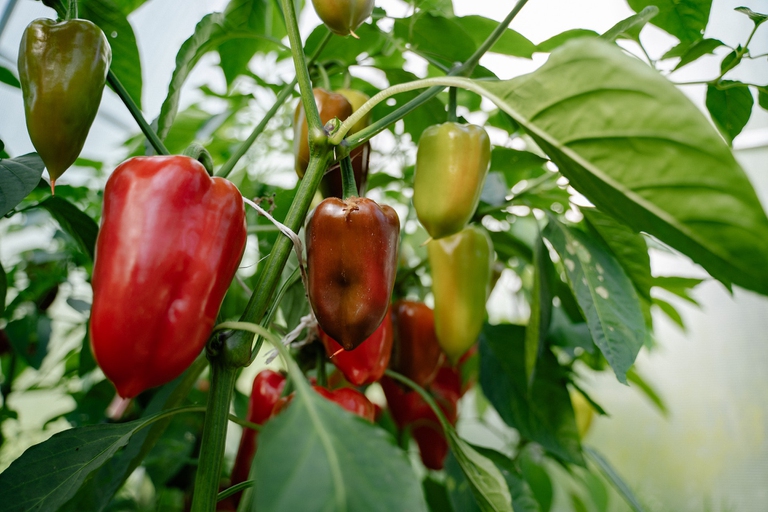
To a pepper
add the wings:
a red dragonfly
It was then the Spaniards who brought peppers to Europe, in the 16th century AD, where they were identified as "Brazilian pepper".In the 18th century, the chef and philosopher Vincenzo Corrado defined them as "rustic and vulgar food", even though people liked them a lot.Probably for this very reason or also because they are simple to grow, over the centuries peppers have spread throughout the world, especially in warm or temperate areas, with their large and fleshy fruits, true stars in the kitchen.
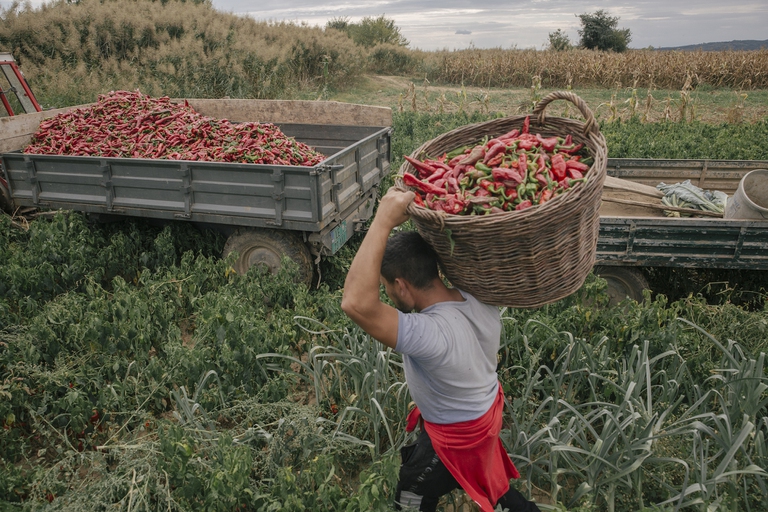
The cultivation of peppers
In particular the species is cultivated capsicum annuum which reaches one to one meter and a half in height, with solitary white flowers and berry fruits, turgid and rich in seeds, i.e. the vegetables that we generically call peppers.This species also includes chili peppers.Depending on the variety, peppers develop different fruits in shape and colour:globose, elongated, conical or prism-shaped, with a smooth or ribbed surface.
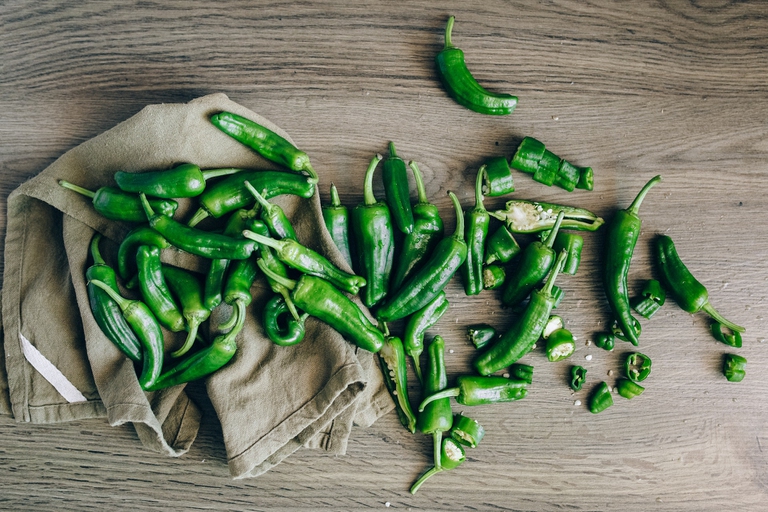
And then the colors:red, yellow, orange yellow or violet and green, i.e. the pepper that has not reached full color and contains less lycopene.Their taste is intense, acidic and pungent, unlike the more mature, yellow and red, sweet and fruity ones.They are easily cultivated, sowing them in March (in a protected environment) and burying the seedlings in May, to then harvest the fruits in mid-summer, between the end of July and August, when they reach full ripeness, turning from bright yellow to bright orange or bright red.
Characteristics and varieties
Capsicum annuum peppers are classified based on spiciness (sweet or spicy) and to form:square of Carmagnola, square of Asti, square of Nocera, heart-shaped of Capriglio, thin Cornetto of Pontecorvo or the uncinate of Senise.Below is a small summary of the most widespread varieties in Italy.
Sweet peppers
- Peppers squares:Nocera yellow or red, Asti yellow or red, Braidese red or yellow, California wonder, Yolo wonder, topepo or tomato pepper.
- Peppers horn:bull's horn, Lungo Marconi, Lungo di Chiasso, Toro di Spagna, Senise PGI peppers (or also "cruschi" because they taste crunchy after cooking in boiling oil), verticus.
- Peppers stretch:long and sweet thin chili pepper, Bergamo cigarette, long Nocera.
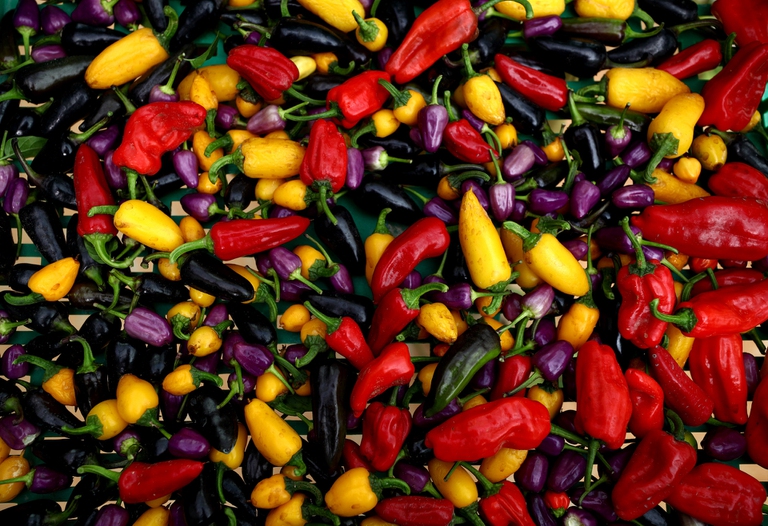
Spicy peppers
- Peppers horn:thin and long cajenne pepper
- Peppers squares:dwarf square of Asti, small square of Veneto, small square of Florence, allspice
The variability of spiciness depends on the content of capsaicin which can fluctuate between zero and over 100 thousand Scoville units (scale for measuring spiciness).It is a chemical compound that stimulates the heat receptors also present on the tongue, causing the burning sensation typical of biting the vegetable, but, curiously, it is a substance detected only by mammals.Birds, in fact, enjoy chili peppers, thus managing to spread the seeds after digesting them, promoting their growth.Capsicin is present in the so-called placenta, the white structure inside the fruit and in the seeds (to a lesser extent).This part should also be eliminated in sweet peppers.
Nutritional properties and health benefits
Good, juicy and very tasty, peppers are also rich in virtues.100 g of pulp contain only 20-30 calories.The presence of fiber and 92 percent water makes them vegetables that increase the feeling of satiety:they are therefore perfect for low-calorie diets.They then contain a good quantity of vitamin C. In ripe and raw peppers, with the same weight, it can reach 4-5 times that contained in an orange.This is why they are considered antioxidants, meaning they help fight free radicals and strengthen the immune system.The presence of vitamin A, on the other hand, is important for the health of the eyes, and therefore of vision, and vitamin B6 contributes to the correct functioning of the nervous system.Finally, they are equipped with minerals, such as magnesium and potassium, as well as an abundance of beta-carotene, especially in the red ones.The latter is a carotenoid which, like lycopene for tomatoes, is absorbed better when associated with lipids, which is why it is recommended to consume peppers with a drizzle of extra virgin olive oil.
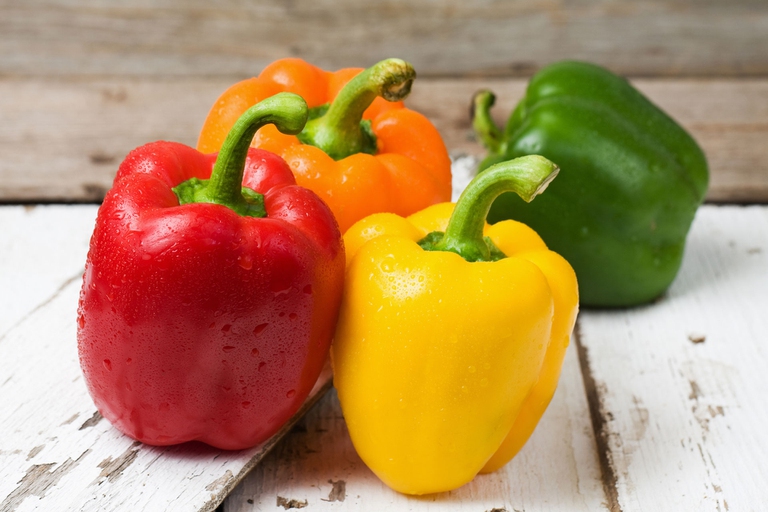
Digestibility
Only those with gastric problems should view them with suspicion.But the digestion difficulty occurs especially in green peppers, which are less sweet and more indigestible.It is linked to their "skin", a transparent fibrous complex that covers the pulp.If it is eliminated after cooking, the difficulty in digesting them is also eliminated.
Purchase and storage
When purchasing, choose turgid peppers, with taut and brightly colored skin.To keep them fresh they should be stored in the refrigerator without washing them, in the vegetable section, for a maximum of one week.Beyond this period it is better to freeze them but after cooking.They can also be stored in oil or sweet and sour.
Recipes and use in the kitchen
To take advantage of the abundance of vitamin C and mineral salts, it is best to consume them raw.In fact, cooking could reduce the quantity.So make way for the dip with extra virgin olive oil, hummus of chickpeas or tzatziki, or the traditional gazpacho Andalusian.As we were saying, however, to help digestibility (with the elimination of the "skin") or the availability of carotenoids (such as beta-carotene) cooking is necessary.So also try cooking them delicately by steaming or in a pan, without overdoing the heat.Then there are the super tasty dishes, those that made them protagonists of the gastronomic tradition first in Central and South America, their homeland, then in the countries bordering the Mediterranean, to reach the whole world.
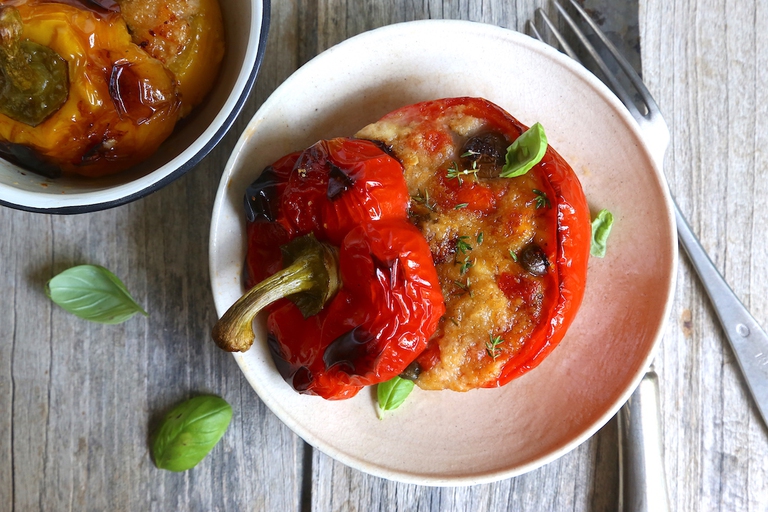
Any Mediterranean examples?In France they enrich the ratatouille, in Spain”Basque style” are filled with a mix of anchovies, aubergines, onion and shallots.For our Italy the watering leads immediately to the caponata Sicilian, to stewed peppers Piedmontese, then ai stuffed peppers or even at pepper and chickpea meatballs.These are just some of our vegetarian recipes featuring this succulent vegetable.If the garden has produced in abundance, it is possible to enjoy them all year round by preserving them in oil (for about 6 months).The possibilities are truly endless and, how to say... Wherever you go, delicacies with peppers that you find.
